Themed collection Most popular 2019-2020 inorganic, main group and crystal engineering chemistry articles

Aperiodic metal–organic frameworks
This perspective discusses progress and future directions in metal–organic frameworks with aperiodic structures. Reported quasicrystalline and incommensurate materials are presented, and pathways towards designing new such materials are provided.

Chem. Sci., 2020,11, 11094-11103
https://doi.org/10.1039/D0SC04798H
Recent advances in low oxidation state aluminium chemistry
Documenting the synthesis and isolation of novel low oxidation state aluminium (Al) compounds, which until recently has seen relatively slow progress over the 30 years since such species were first isolated.

Chem. Sci., 2020,11, 6942-6956
https://doi.org/10.1039/D0SC02686G
Stable cyclic (alkyl)(amino)carbene (cAAC) radicals with main group substituents
Recent attempts to isolate cyclic (alkyl)(amino)carbene stabilized radicals of p-block elements have been described here.
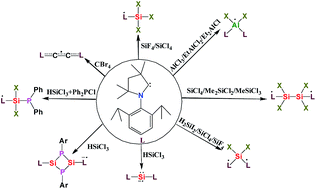
Chem. Sci., 2019,10, 4727-4741
https://doi.org/10.1039/C9SC01351B
Rhenium versus cadmium: an alternative structure for a thermally stable cadmium carbonyl compound
The previously reported novel cadmium carbonyl compound, [Cd(CO)3(C6H3Cl)]4, is better formulated as the rhenium compound, [Re(CO)3(C4N2H3S)]4.
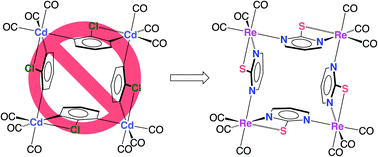
Chem. Sci., 2020,11, 11763-11776
https://doi.org/10.1039/D0SC04596A
Photo-triggered hydrogen atom transfer from an iridium hydride complex to unactivated olefins
Upon irradiation with visible light, an iridium hydride complex undergoes hydrogen atom transfer (HAT) to unactivated olefins in presence of a sacrificial electron donor and a proton source.
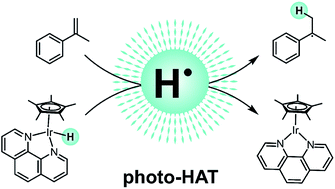
Chem. Sci., 2020,11, 8582-8594
https://doi.org/10.1039/D0SC01820A
On/off porosity switching and post-assembly modifications of Cu4L4 metal–organic polyhedra
The crystal packing and porosity of Cu4L4 metal–organic polyhedra can be controlled by exploiting their rich solvatomorphism, structural non-rigidity and amenability to covalent post-assembly modifications.
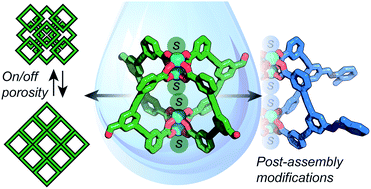
Chem. Sci., 2020,11, 3664-3671
https://doi.org/10.1039/D0SC00070A
Metal complexes as a promising source for new antibiotics
There is a dire need for new compounds to combat antibiotic resistance: metal complexes might provide the solution. 906 metal complexes were evaluated against dangerous ESKAPE pathogens and found to have a higher hit-rate than organic molecules.

Chem. Sci., 2020,11, 2627-2639
https://doi.org/10.1039/C9SC06460E
Stable group 8 metal porphyrin mono- and bis(dialkylcarbene) complexes: synthesis, characterization, and catalytic activity
We report the isolation, X-ray crystal structures, reactivity and DFT calculations of iron- and ruthenium-mono(dialkylcarbene) and osmium-bis(dialkylcarbene) porphyrins and diarylcarbene transfer/insertion reactions catalyzed by iron-mono(dialkylcarbene) porphyrin.

Chem. Sci., 2020,11, 2243-2259
https://doi.org/10.1039/C9SC05432D
Supramolecular assembly of bent dinuclear amphiphilic alkynylplatinum(II) terpyridine complexes: diverse nanostructures through subtle tuning of the mode of molecular stacking
A new class of bent amphiphilic alkynylplatinum(II) terpyridine complexes was found to adopt different modes of molecular stacking to give diverse nanostructures.
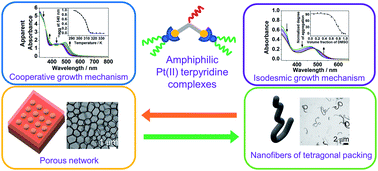
Chem. Sci., 2020,11, 499-507
https://doi.org/10.1039/C9SC04475B
Ruthenium based antimicrobial theranostics – using nanoscopy to identify therapeutic targets and resistance mechanisms in Staphylococcus aureus
A detailed study on the uptake and antimicrobial activity of a RuII theranostic complex with wild-type S. aureus, MRSA, and other mutants has identified the specific resistance mechanisms that Gram-positive bacteria display against this lead.

Chem. Sci., 2020,11, 70-79
https://doi.org/10.1039/C9SC04710G
Mining predicted crystal structure landscapes with high throughput crystallisation: old molecules, new insights
New crystal forms of two well-studied organic molecules are identified in a computationally targeted way, by combining structure prediction with a robotic crystallisation screen, including a ‘hidden’ porous polymorph of trimesic acid.
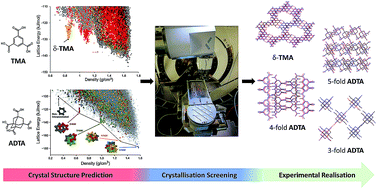
Chem. Sci., 2019,10, 9988-9997
https://doi.org/10.1039/C9SC02832C
A nano-cocktail of an NIR-II emissive fluorophore and organoplatinum(II) metallacycle for efficient cancer imaging and therapy
A novel NIR-II theranostic nanoprobe, PSY (∼110 nm), was concisely developed, which demonstrated excellent photostability, high tumor uptake, superior S/N ratios and more efficient cancer treatment with minimal side effects than cisplatin.
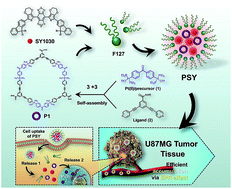
Chem. Sci., 2019,10, 7023-7028
https://doi.org/10.1039/C9SC02466B
Thermodynamic and kinetic studies of H2 and N2 binding to bimetallic nickel-group 13 complexes and neutron structure of a Ni(η2-H2) adduct
Binding energies for H2 and N2 at nickel become more exergonic for the larger group 13 sigma-accepting supports.
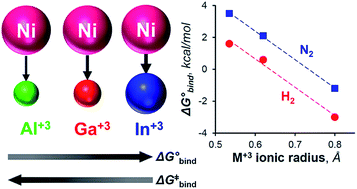
Chem. Sci., 2019,10, 7029-7042
https://doi.org/10.1039/C9SC02018G
Combinatorial design of multimeric chelating peptoids for selective metal coordination
The combinatorial synthesis of a new library of tetrameric peptoid ligands is introduced, enabling coordination and characterization of f-block metals.

Chem. Sci., 2019,10, 6834-6843
https://doi.org/10.1039/C9SC01068H
Mechanism of magnetisation relaxation in {MIII2DyIII2} (M = Cr, Mn, Fe, Al) “Butterfly” complexes: how important are the transition metal ions here?
Tuning of relaxation of magnetisation through 3d metal ion variations in 3d2Dy2 butterflies.

Chem. Sci., 2019,10, 5528-5538
https://doi.org/10.1039/C8SC05362F
Tuning the π-bridge of quadrupolar triarylborane chromophores for one- and two-photon excited fluorescence imaging of lysosomes in live cells
The tetracationic diketopyrrolopyrrole compound 5M exhibits a σ2 value of 4560 GM at 740 nm.
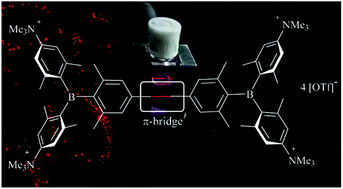
Chem. Sci., 2019,10, 5405-5422
https://doi.org/10.1039/C9SC00793H
Facile synthesis of 1D organic–inorganic perovskite micro-belts with high water stability for sensing and photonic applications
The development of low-dimensional perovskite micro/nanostructures with high water stability for novel photonic/electronic applications is highly desirable.

Chem. Sci., 2019,10, 4567-4572
https://doi.org/10.1039/C9SC00162J
Origin of the isotropic motion in crystalline molecular rotors with carbazole stators
Herein we report two crystalline molecular rotors 1 and 4 that show extremely narrow signals in deuterium solid-state NMR spectroscopy.

Chem. Sci., 2019,10, 4422-4429
https://doi.org/10.1039/C8SC04398A
Bimetallic nickel-lutetium complexes: tuning the properties and catalytic hydrogenation activity of the Ni site by varying the Lu coordination environment
Varying the Lu coordination environment tunes the Ni–Lu interaction and the catalytic activity of the Ni site in styrene hydrogenation.

Chem. Sci., 2019,10, 3375-3384
https://doi.org/10.1039/C8SC04712J
Reversible alkene binding and allylic C–H activation with an aluminium(I) complex
The monomeric molecular aluminium(I) complex 1 [{(ArNCMe)2CH}Al] (Ar = 2,6-di-iso-propylphenyl) reacts with a series of terminal and strained alkenes including ethylene, propylene, allylbenzene and norbornene to form alkene bound products.

Chem. Sci., 2019,10, 2452-2458
https://doi.org/10.1039/C8SC04865G
Cobalt-bridged secondary building units in a titanium metal–organic framework catalyze cascade reduction of N-heteroarenes
We report here the synthesis of a robust Ti–MOF with novel SBUs and its use as oxo ligands to chelate Co-hydrides for cascade reduction of N-heteroarenes.
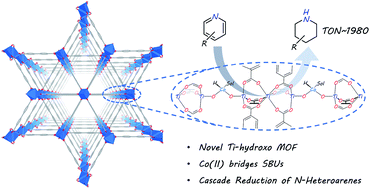
Chem. Sci., 2019,10, 2193-2198
https://doi.org/10.1039/C8SC04610G
A concentrated array of copper porphyrin candidate qubits
Metal–organic frameworks enable the synthesis of arrays of atomically precise qubits.

Chem. Sci., 2019,10, 1702-1708
https://doi.org/10.1039/C8SC04435J
Rare “Janus”-faced  single-molecule magnet exhibiting intramolecular ferromagnetic interactions
single-molecule magnet exhibiting intramolecular ferromagnetic interactions
The unusual ferromagnetically coupled  compound was prepared by the use of Me3SiN3 with the metal ions being exclusively bridged by end-on N3−. Th cationic molecule is a rare example of a 3d-metal cluster exhibiting a “Janus”-faced SMM behavior for the dried and wet forms.
compound was prepared by the use of Me3SiN3 with the metal ions being exclusively bridged by end-on N3−. Th cationic molecule is a rare example of a 3d-metal cluster exhibiting a “Janus”-faced SMM behavior for the dried and wet forms.
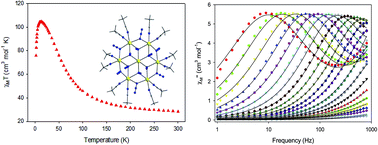
Chem. Sci., 2019,10, 1626-1633
https://doi.org/10.1039/C8SC04384A
Oxygen uptake in complexes related to [NiFeS]- and [NiFeSe]-hydrogenase active sites
The NiFe hydrogenase biomimetics are protected from oxygen invaders by sulfur and selenium castle guards.
![Graphical abstract: Oxygen uptake in complexes related to [NiFeS]- and [NiFeSe]-hydrogenase active sites](/en/Image/Get?imageInfo.ImageType=GA&imageInfo.ImageIdentifier.ManuscriptID=C8SC04436H&imageInfo.ImageIdentifier.Year=2019)
Chem. Sci., 2019,10, 1368-1373
https://doi.org/10.1039/C8SC04436H
Influence of structure–activity relationships on through-space intervalence charge transfer in metal–organic frameworks with cofacial redox-active units
Metal–organic frameworks incorporating cofacially-aligned redox-active ligands exhibit through-space intervalence charge transfer phenomena.

Chem. Sci., 2019,10, 1392-1400
https://doi.org/10.1039/C8SC01128A
Monitoring metal–amyloid-β complexation by a FRET-based probe: design, detection, and inhibitor screening
A FRET-based method was developed for monitoring metal–amyloid-β complexation and identifying inhibitors against such interaction.

Chem. Sci., 2019,10, 1000-1007
https://doi.org/10.1039/C8SC04943B
Topology and porosity control of metal–organic frameworks through linker functionalization
Topology and porosity control of Zr6-based MOFs was achieved by introducing steric functionalization into the conformations of substituted tetracarboxylate linkers.

Chem. Sci., 2019,10, 1186-1192
https://doi.org/10.1039/C8SC04220A
Folding of unstructured peptoids and formation of hetero-bimetallic peptoid complexes upon side-chain-to-metal coordination
Metal ions initiate peptoids helicity that lead to positive allosteric cooperativity.

Chem. Sci., 2019,10, 620-632
https://doi.org/10.1039/C8SC03616K
Controllably realizing elastic/plastic bending based on a room-temperature phosphorescent waveguiding organic crystal
The room-temperature phosphorescent DBBZL crystals could exhibit reversible bending and irreversible bending based on one crystal. These flexible crystals exhibit good waveguiding property in straight state, elastic bending state and plastic bending state, demonstrating the application of flexibility.

Chem. Sci., 2019,10, 227-232
https://doi.org/10.1039/C8SC03135E
Hetero-metallic active sites coupled with strongly reductive polyoxometalate for selective photocatalytic CO2-to-CH4 conversion in water
Two reductive polyoxometalate (POM)-based heterogeneous photo-catalysts display highly selective CO2-to-CH4 conversion in water.
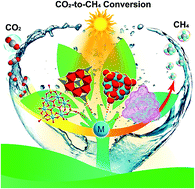
Chem. Sci., 2019,10, 185-190
https://doi.org/10.1039/C8SC03471K
About this collection
This specially curated collection pulls together some of the most popular articles from 2019 and 2020 in the field of inorganic, main group and crystal engineering chemistry. The collection presents some outstanding contributions to the field, ranging from the mechanism of magnetisation relaxation in butterfly complexes to on/off porosity switching in metal-organic polyhedra, and as with all Chemical Science articles – they are all completely free to access and read. We hope you enjoy browsing through this collection.
See also:
Most popular 2019-2020 materials and energy chemistry articles
Most popular 2019-2020 physical and theoretical chemistry articles
Most popular 2019-2020 organic chemistry articles
Most popular 2019-2020 catalysis articles
Most popular 2019-2020 analytical chemistry articles
Most popular 2019-2020 supramolecular chemistry articles
Most popular 2019-2020 chemical biology articles
Most popular 2019-2020 review articles